July 2022 was a milestone month for raw milk cheese in Australia. After some intensive lobbying from Neal’s Yard Dairy and Australian advocates like Will Studd, 12 British raw milk cheeses were authorised for sale in Australia for the first time. Read on to discover what they are.
SEE ALSO: Why raw milk cheese is the ultimate expression of time and place →
1. Appleby’s Cheshire
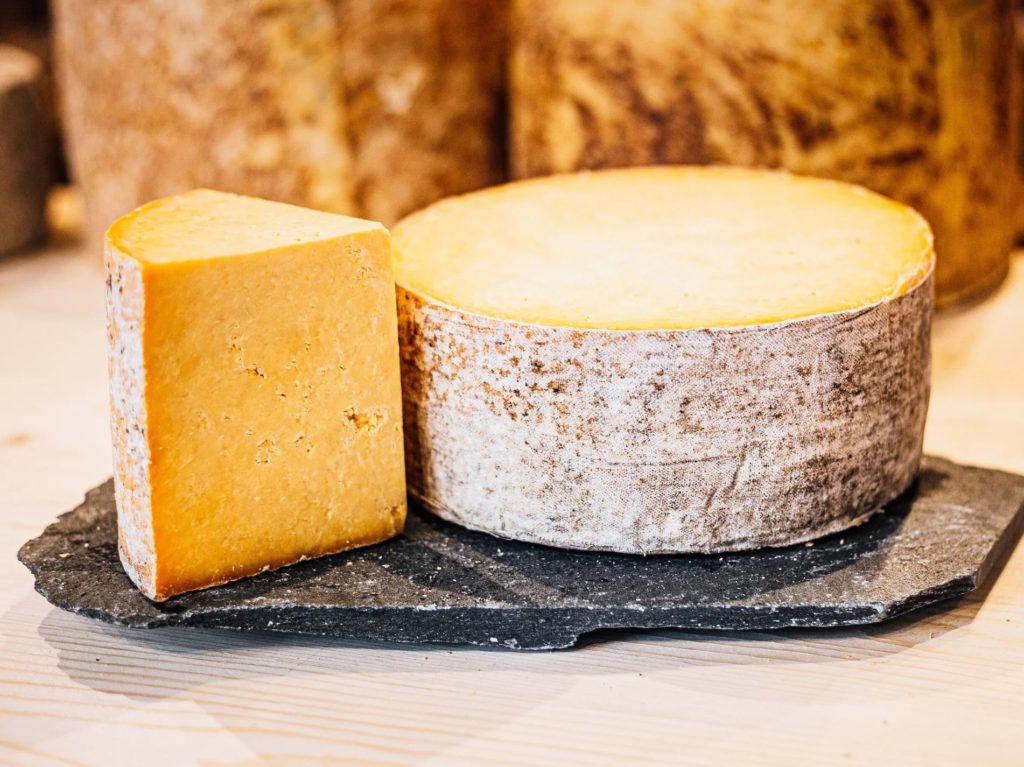
Cheshire is a dense and crumbly British territorial cheese that comes from Cheshire and four neighbouring counties. Remarkably, Cheshire was once the most popular and significant cheese in England.
Indeed, the pressed uncooked cheese dominated the London market in the 17th and 18th centuries. But the advent of industrialisation would change all of that as cheaper and more efficient Cheddars took over the marketplace.
Appleby’s Cheshire is currently the only raw milk, clothbound farmhouse Cheshire still in production in Britain. Using the milk of their small herd of Friesian cows, the Applebys make both a white Cheshire and their signature orange Cheshire.
On their farm, they use morning and evening milk together with a home-produced starter culture.
The production is similar to Cheddar except that the curds are cut into blocks and broken, rather than being stacked and flipped. And they achieve the orange colour of their Cheshire by adding the natural dye, annatto.
The ageing process for their cheese lasts between six weeks to 10 months, depending on the size of the wheel. A mature Appleby’s Cheshire is firm, yet moist and flaky. Overall, the cheese shows rich and mineral flavours with savoury notes of grass.
We recommend pairing this beautiful cheese with a glass of local dark ale.
2. Appleby’s Double Gloucester
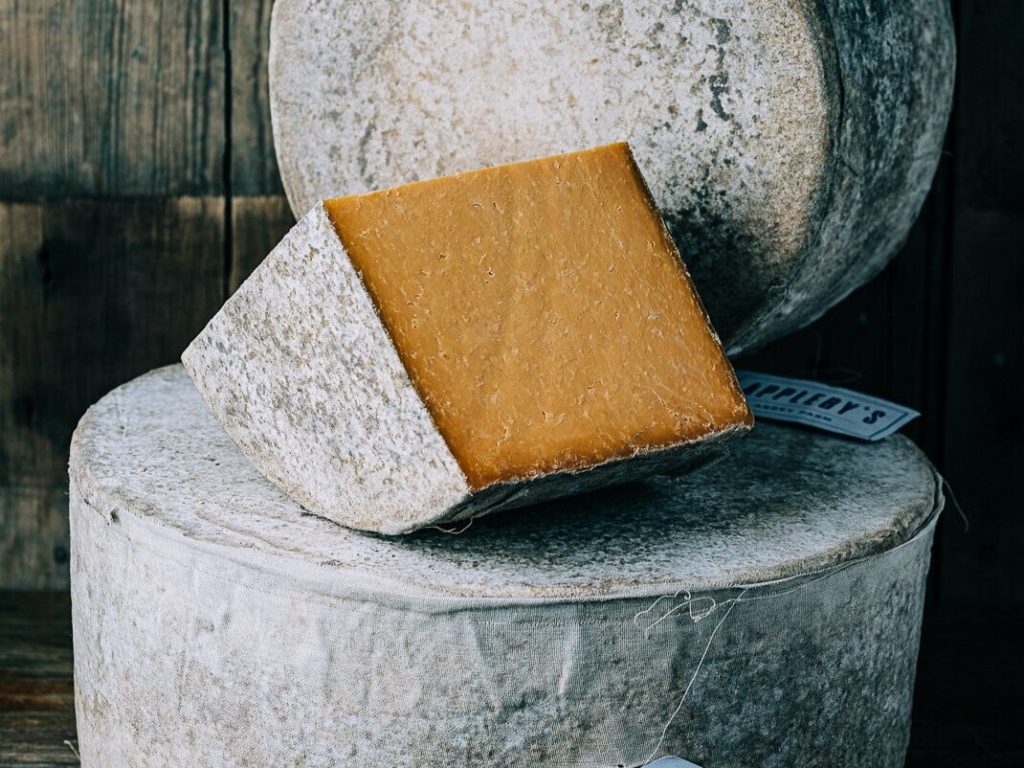
Next, we’ve got a second raw milk cheese from Edward and Christine Appleby’s farm, their Double Gloucester. Gloucester is a traditional pressed uncooked cheese that finds its roots in the Gloucestershire in the 16th century.
Single Gloucester is made from partly skimmed milk whereas Double Gloucester uses whole fat milk taken from both morning and evening milking.
Using a 300-year-old recipe, head cheesemaker Garry Gray crafts a Double Gloucester that is less acidic and smoother in texture than their Cheshire. As is the case with their signature Cheshire, they add the natural dye annatto to impart an orange colour to the cheese’s paste.
Overall, the two recipes are quite similar except for variations in timing, temperature and acidity of the curd. It takes around 4 hours 20 minutes, at a temperature of up to 38.9°C (102°F), for the milk to reach the correct acidity after renneting.
At this point, they cut the curds, press them for 48 hours and wrap the cheese in cloth. Maturation can last up to eight weeks.
At this age, Appleby’s Double Gloucester develops a firm but moist texture. Its flavours are reminiscent of warm buttered toast with subtle notes of minerals and salt. Also, watch out for a long, tangy finish.
This Double Gloucester pairs beautifully with light-bodied reds such as Pinot Noir and Zinfandel or even a white like Sancerre. If you prefer pairing with beer, this raw milk beauty matches well with a number of local ales.
3. Hafod Welsh Cheddar
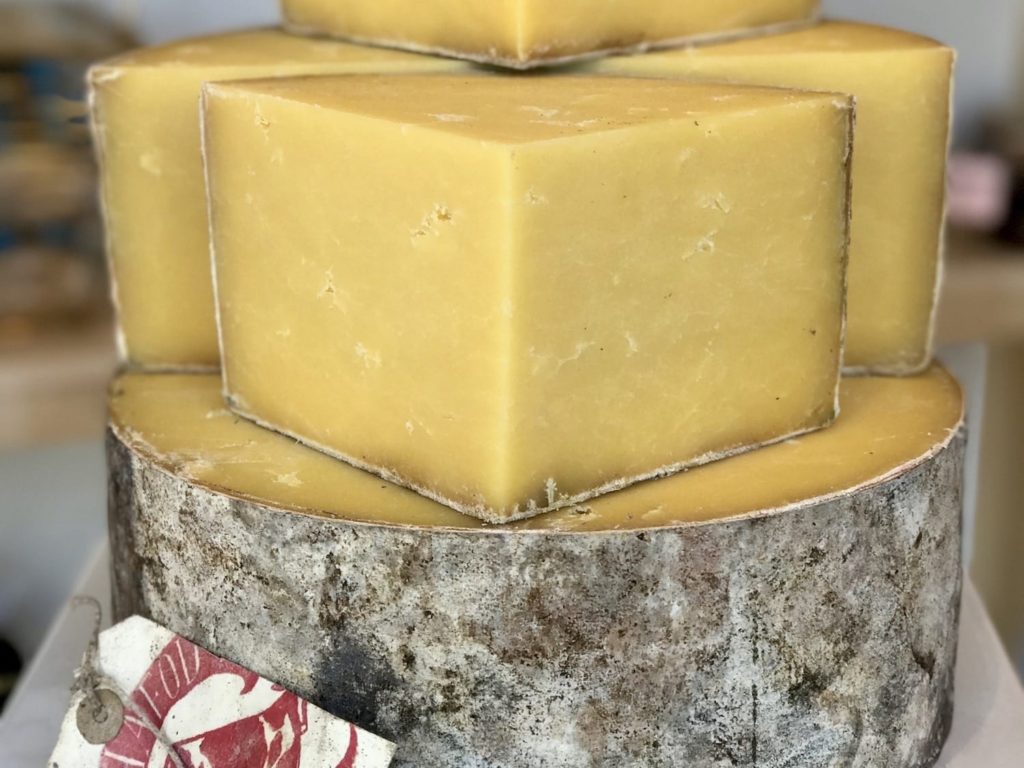
Hafod is a clothbound Cheddar made from raw cow’s milk by the Holden family on their organic farm, Bwlchwernen Fawr. The milk from their own herd of 75 Ayrshire cows is rich and creamy and perfect for cheesemaking.
Moreover, Hafod is a Welsh word that means summer pasture. And looking after the pasture is key to producing the highest quality cow’s milk from their herd.
To make Hafod, the cheesemaker uses traditional century-old methods which involve slow cheddaring. For starters, they add a yoghurt culture to the milk and leave the sheets of curd to sit until evening. Come evening, they start milling. Overall, this slow process produces elastic, silky and smooth curds which have a deep buttery aroma.
Afterwards, the cheesemaker salts the curds and packs them into cloth-lined cylinders to be pressed. The resulting 10kg and 18kg rounds are matured for a minimum of 10 months.
At this age, the cheese truckles develop a mouldy rind around a rich and buttery golden paste. Moreover, the cheese’s aroma is reminiscent of hay and the flavour grassy and nutty, with a hint of onion.
It is quite common for the cheese to contain naturally occurring blue veins which add a bit of character and depth of flavour. Enjoy this Welsh wonder with a fruity, malty Pale Ale.
4. Isle of Mull Cheese
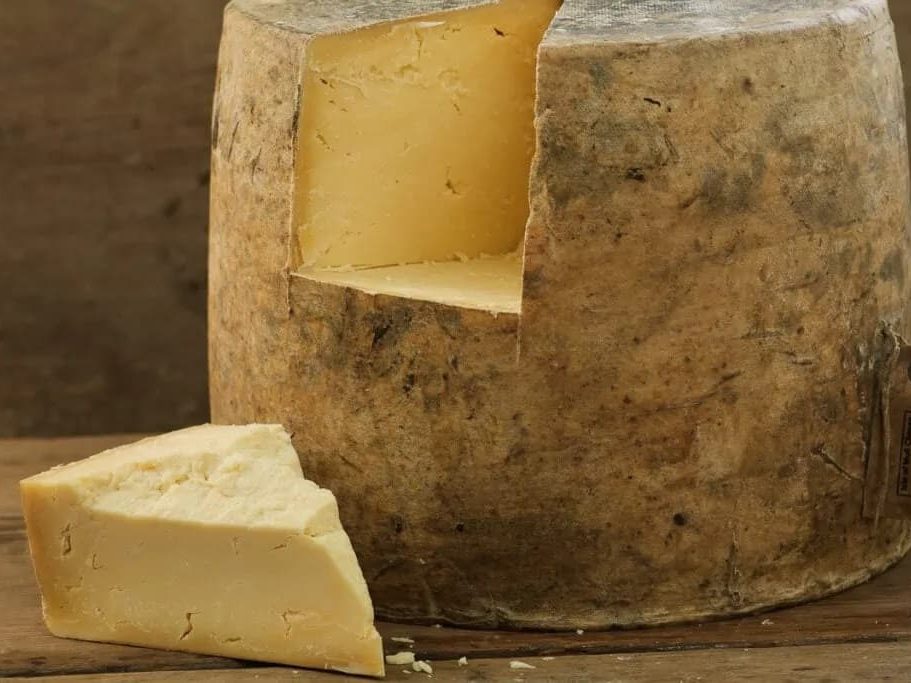
The fourth cheese on our list is the first entry from Scotland. Indeed, Isle of Mull is a quintessentially Scottish Cheddar made from the raw milk of Friesian cows. As its name indicates, the cheese comes from the Isle of Mull in the Inner Hebrides. The island lies off the west coast of Scotland and is close to a very famous neighbour, the Isle of Skye.
The island’s terroir plays a significant role in shaping this pressed uncooked cheese. Indeed, the soil, air, grass and weather all shine through in the final product.
During the summer months, their cows graze freely on the property’s rich pastures. On the other hand, during winter, they feed on hay and a supplement of fermented grain from a local distillery.
While the summer milk produces a cheese that is grassy, the winter versions are deeply flavoursome and complex. Once set and moulded, the wheels are matured in an underground cellar for up to 18 months.
A mature Isle of Mull cheese develops a rich, brothy and boozy flavour profile. Similar to Hafod, the truckles often present with a slight blue veining, which adds to the complexity of the cheese. As for the texture, you can expect something a bit waxy.
If you want to eat this cheese like the locals, melt a slice on top of wholemeal toast and serve it with a sweet onion chutney.
5. Keen’s Cheddar
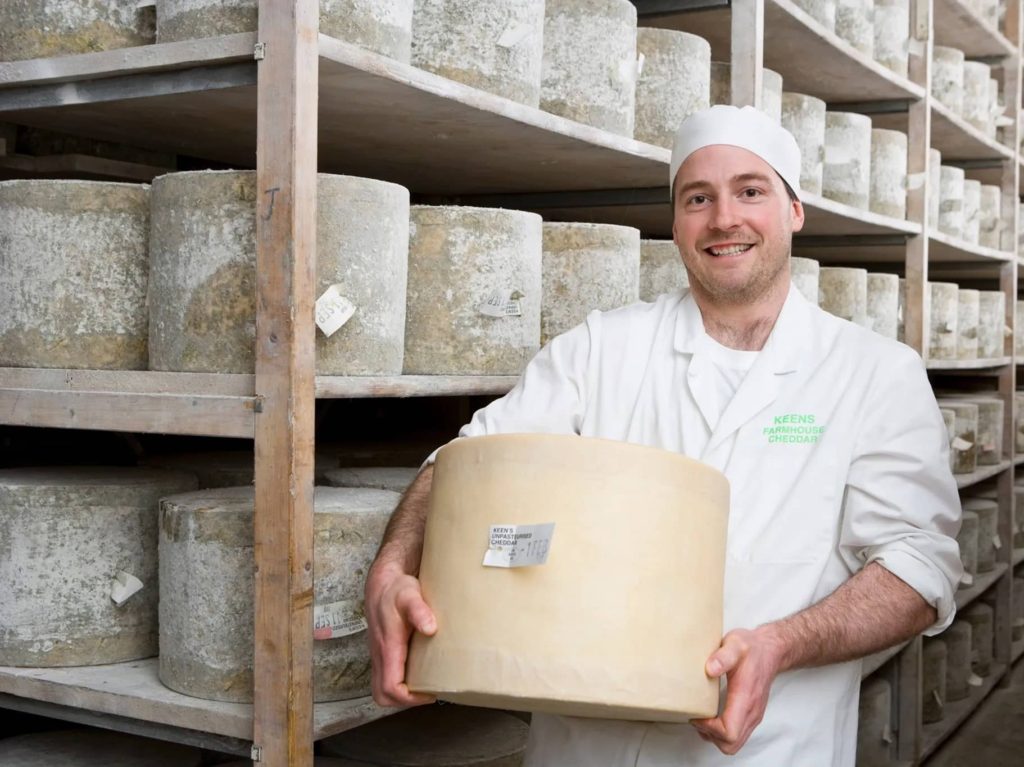
Keen’s Cheddar is the third British raw milk Cheddar coming to Australia from July 2022. This particular cheese has been made by the Keen family for three generations in the birthplace of Cheddar, Somerset.
Indeed, they’ve been making raw milk cheese at their family farm, Moorhayes since 1899. To this day, they use the West Country tradition of larding and cloth binding.
Being farmhouse cheesemakers, the Keens use the raw milk from their own cows to make cheese within 12 hours of milking. The milk travels 50 yards to their dairy and is not tampered with in any way. Moreover, they use a “pint” starter culture and the hands-on process of cheddaring to drain the whey.
Finally, they wrap each wheel in muslin cloth and rub them in lard. The clothbound cheese is then stowed in wooden shelves in their cellar to mature from 11 months to two years.
A two-year-old Keen’s Cheddar has a hard, crumbly texture with a surprisingly fresh grassy flavour. Watch out for a hint of spiciness. Pair it with your favourite India Pale Ale, British or American. Or you can try a glass of Pinot Noir, Beaujolais, Syrah, Port, Zinfandel, Chardonnay, or Chenin Blanc.
Finally, you can grate Keen’s Cheddar over pan-fried mushrooms on toast.
6. Kirkham’s Lancashire
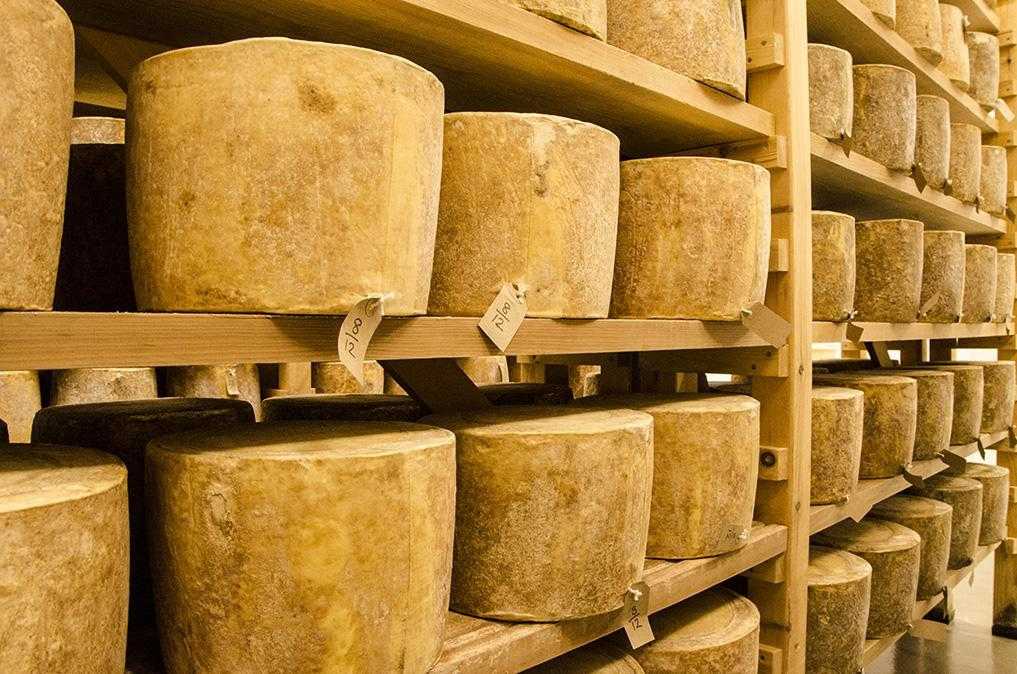
Our next British territorial is Lancashire, from the county of Lancashire (surprise, surprise…). Lancashire is a cow’s milk cheese that is currently available in three variants, young Creamy Lancashire, mature Tasty Lancashire and the more commercial Crumbly Lancashire.
In 1939, there are more than 200 farmhouse producers of Lancashire cheese in operation.
Today, the Kirkhams are the last ones standing. Indeed, Graham Kirkham is a third-generation cheesemaker following in his family’s footsteps to make raw milk Lancashire. The Kirkham family currently make both Creamy (aged up to 12 weeks) and Tasty (aged over 12 weeks) Lancashire cheese.
To make a traditional Lancashire, Graham uses curds from several milkings. As a matter of fact, this is a highly unusual approach and his Lancashire is the only British territorial that is made this way. The recipe involves combining curds from several days and is very time-consuming.
During maturation, Kirkham’s Lancashire develops a texture that is closer to the crumbly side of ‘buttery crumble’ and some flavours that are more upfront and punchier. You can expect a buttery, yoghurty flavour with a fluffy and light texture that melts in the mouth.
Serve chunks of Lancashire with warm Eccles cakes. Also, this cheese is an excellent addition to grilled cheese toasties.
7. Lincolnshire Poacher
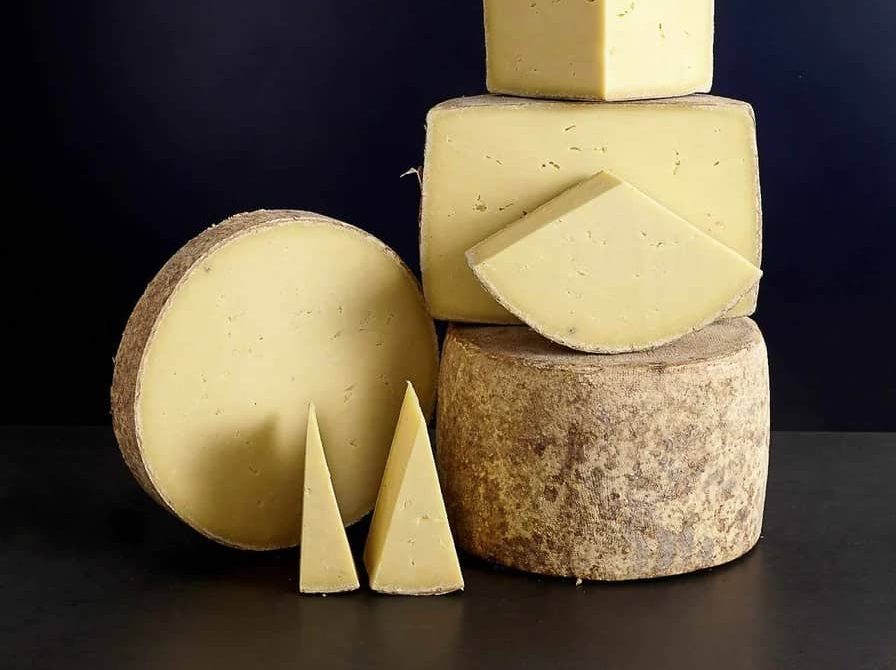
The east coast of England is far from being a cheesemaking hotspot. But it is home to one of Britain’s most surprising raw milk cheeses. And from July 2022, Australians will be able to enjoy Lincolnshire Poacher.
The loamy and clay soils of eastern England do not make for great dairy farming but Simon Jones’s Ulceby Grange Farm is fortunate enough to have lush pastures on chalky land. The Joneses have owned the farm since 1917 but only started making cheese in the 1990s.
Upon his return from agricultural college, a young Simon Jones enlisted the help of renowned Welsh cheesemaker Dougal Campbell to develop a new cheese. Simon wanted to subtly introduce the qualities of a pressed mountain cheese like Comté into a traditional West Country Cheddar.
Using the raw milk of their Holstein Friesian cows, the cheesemaker crafts wheels of Lincolnshire Poacher. Once they’ve moulded the curds, they salt and press the truckles for 36 hours. Finally, they age the formed cheeses on wooden boards for up to 36 months.
Depending on the cheese’s age, you can expect notes of tropical fruits and warm mountain flavours reminiscent of Comté. Lincolnshire Poacher is excellent melted on top of buttered crumpets as an alternative to cheese on toast.
8. Montgomery’s Cheddar
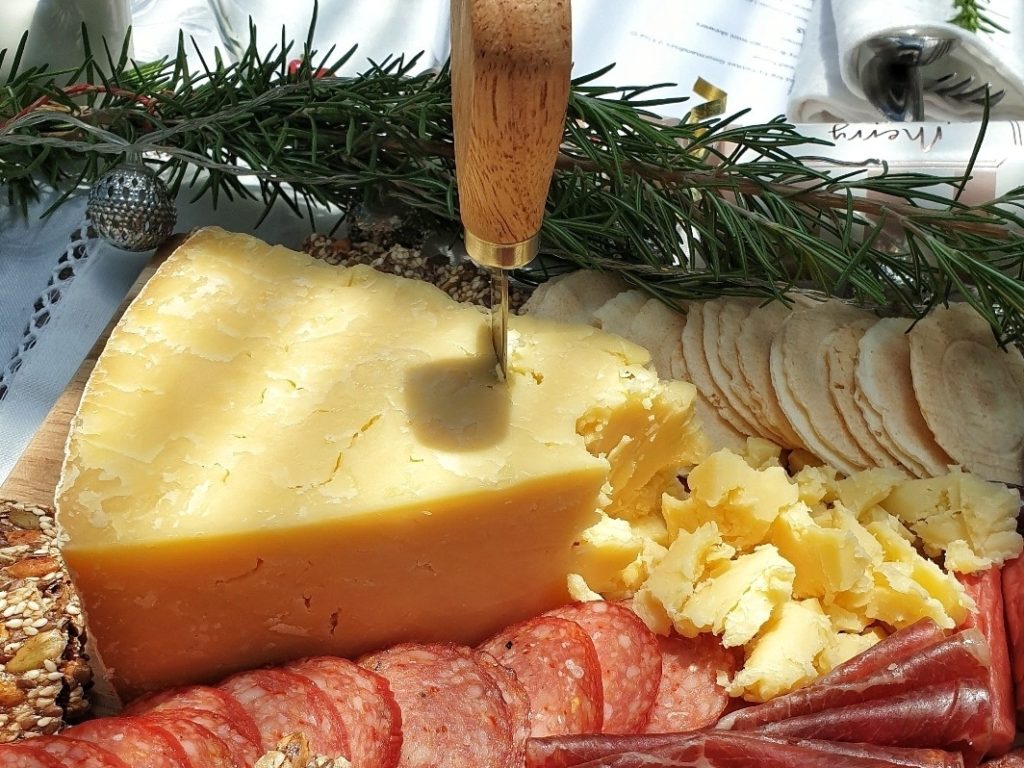
Montgomery’s Cheddar is a clothbound pressed cheese from North Cadbury in Somerset, England. Actually, the Montgomery family have been making this Cheddar at Manor Farm for three generations now. Jamie Montgomery’s grandfather, Sir Archibald Langman, established the family farm in 1911.
While many other cheesemakers shut down during the World Wars, they persevered with making their amazing Cheddar.
In North Cadbury, the locals have become accustomed with seeing the farm’s 200 Friesian cows coming in from the fields for milking daily. In fact, Jamie and his small team look after their herd with the utmost care. As a result, they produce milk of an exceptional quality that is perfect for cheese making.
Using a traditional cheddaring method, the cheese makers form the 25kg truckles. Afterwards, they wrap them in muslin cloth and mature each cheese for a minimum of 12 months on wooden shelves.
The flavour of Montgomery’s Cheddar actually varies remarkably depending on the day of the week that it is made on. The reason for this is because they change the starter culture that they use every day over the course of a week. As such, this unique Cheddar’s flavour can range from meaty and brothy to sweet and fruity.
Enjoy this one with an equally complex red wine such as a Malbec, Pinot Noir or Cabernet Sauvignon.
9. Sparkenhoe Red Leicester
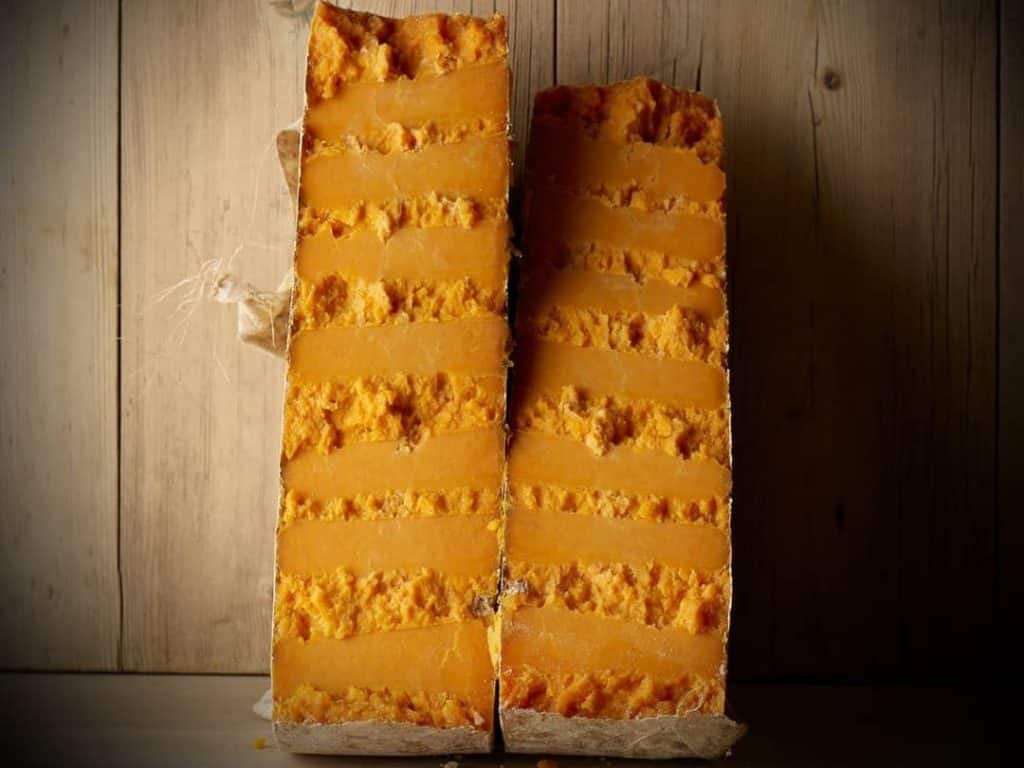
Red Leicester is a traditional English cheese also known as Leicestershire. Historically, all Red Leicester was made in the county of Leicestershire using raw cow’s milk. Because it has a longer shelf life than soft and blue cheeses, it was a favourite of Stilton makers. Indeed, they would use their surplus milk to make Red Leicester.
With the industrial revolution, production of this cheese shifted to a more commercial style and raw milk was replaced with pasteurised milk.
When David and Jo Clarke took over Sparkenhoe Farm, they decided to revive a recipe that had been extinct for more than 50 years. In 2005, they set out to make a traditional, clothbound Red Leicester using the raw milk of their Holstein-Friesian cows.
Using a recipe they found in an old book, the Clarkes add animal rennet and annatto to coagulate and dye their fresh unpasteurised milk. Afterwards, they wrap each wheel of cheese in cloth and lard.
As Red Leicester matures, its texture dries and its flavour strengthens and deepens. You can expect a flavour palette ranging from savoury, smooth and mellow, to nutty and rich. And the cheese’s texture is succulent but chewy.
Elevate a white sauce with a generous grating of Sparkenhoe Red Leicester.
10. St Andrew’s Anster
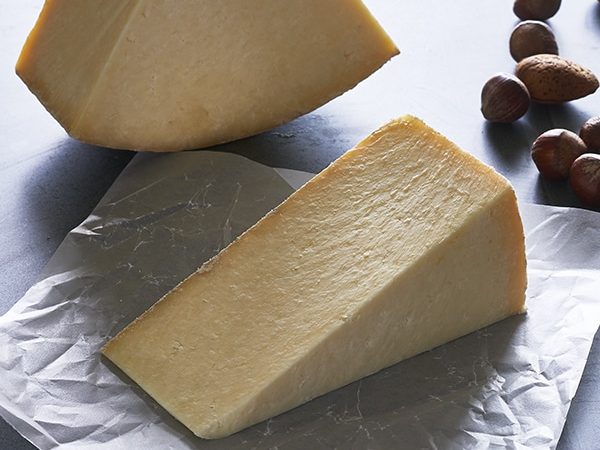
Cheese number 10 is truly a Scottish original. Indeed, St Andrew’s Anster is a handmade raw milk cheese that finds its home in Fife, Scotland. For over 50 years, Jane Stewart and her partner Robert have been farming in Fife.
In 2007 they decided to make cheese with the high-quality raw milk from their home-bred herd of Holstein-Friesian cows. So, they created the St Andrews Farmhouse Cheese Company.
After taking a cheesemaking course at Reading University, Jane travelled to southwest England and Wales to learn more about the industry. Upon her return to the farm, she worked with Robert to create Anster, a cheese named after the nickname of nearby fishing village, Anstruther.
The recipe for Anster is inspired by the crumbly lactic cheeses of northern England, namely Cheshire and Wensleydale.
After maturing for eight weeks, Anster develops a dry, crumbly texture with milky and fresh flavours. Without a doubt, the high-quality milk shines through in the final cheese.
Some of the notes your palate will detect include citrus, mushroom and wooden cellar. Anster is best enjoyed with some crusty fresh bread and a glass of a local cider.
11. St Andrew’s Farmhouse Cheddar
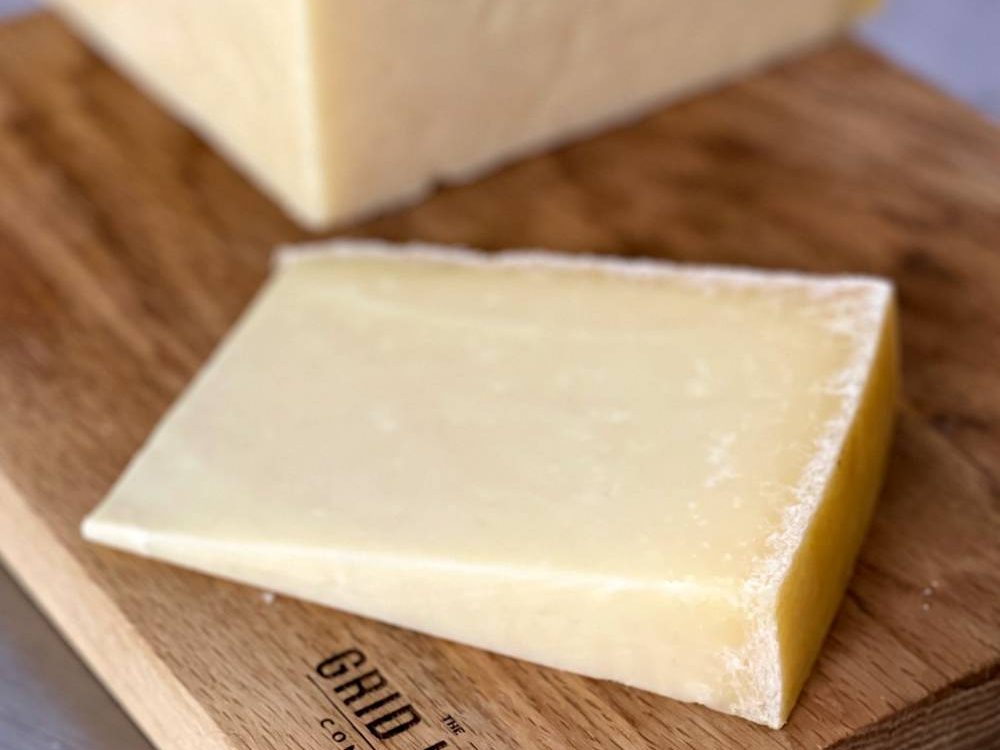
Our next cheese is another offering from St Andrews Farmhouse Cheese Company. St Andrew’s Farmhouse Cheddar is an aged pressed uncooked cheese that is made once again with the raw milk of Holstein-Friesian cows. As we explained above, Jane Stewart’s first cheese was Anster.
But when she was trying to sell Anster at local farmers’ markets, she was struggling to get people’s attention because she had only one cheese. So, she decided to make a second cheese.
Because Cheddar-making uses mostly the same small-scale equipment she had for Anster, it was an easy decision to make. So, Jane adapted a traditional Somerset recipe for Cheddar using original bacterial ferments, manual cheddaring methods and cloth binding.
The end result was St Andrew’s Farmhouse Cheddar and it was a match for some of Britain’s best Cheddars!
Aged for up to 14 months, this clothbound Cheddar shares some similarities with another Scottish cheese on this list, Isle of Mull. The flavours are powerful and tangy with a touch of nuttiness and cream. Unsurprisingly, this cheese soon became a favourite on cheeseboards across the UK.
12. Westcombe Cheddar
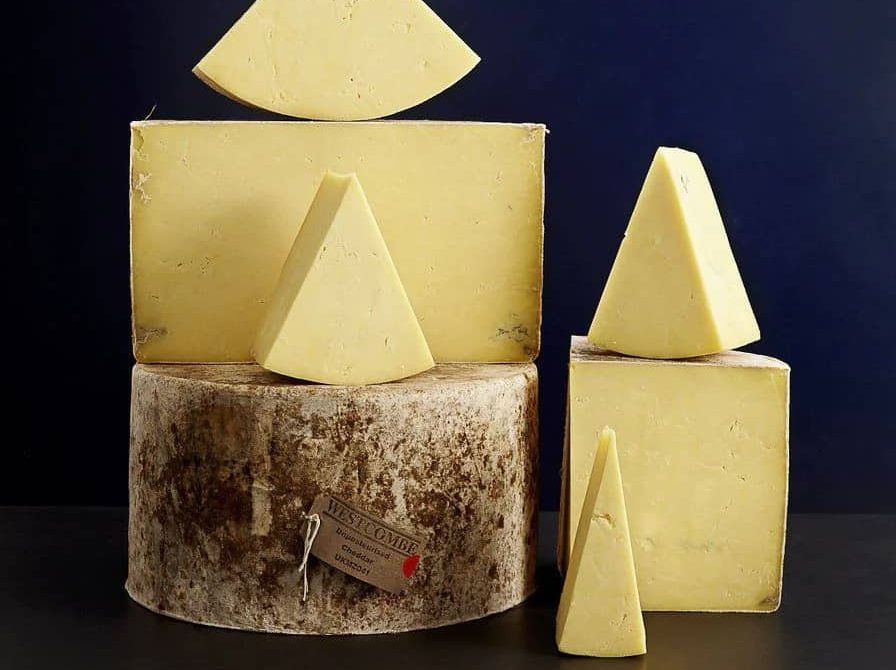
The final British raw milk cheese coming to Australia in 2022 is fittingly a Cheddar. Westcombe Cheddar has been made at Westcombe Farm in Somerset since the late 19th century.
After an extended foray into commercial block Cheddars from the 1970s, Richard Calver reverted the dairy to its traditional roots in 1999. Since then, they have moved away from mechanisation as much as possible.
To make Westcombe Cheddar, they use fresh, raw milk from the farm’s herd of Dairy Shorthorns. Because of the short transit time, the milk is still warm when it reaches their vats. Indeed, the only ingredients they add to the milk are salt, rennet and a traditional starter culture.
Once the curds have drained, they cut, stack and turn the loaves by hand. Once the loaves are ready, they mill, salt and transfer them to Cheddar moulds for pressing. Finally, they wrap each wheel in muslin cloth and lard and allow them to age for up to 18 months.
At this age, Westcombe Cheddar has a deep flavour with a mellow lactic tang and hints of hazelnut, caramel and citrus. Overall, its texture is quite firm with a smooth gradual breakdown which helps to release the flavours.
Undoubtedly, this is a spectacular table cheese but it also excels as an ingredient in cooking. Our personal favourite is to grate this Cheddar into scrambled eggs towards the end of cooking.
Australia opens up to raw milk cheese
We are living in a very exciting era for artisanal cheese in Australia. The raw milk revolution started with Will Studd’s battle for Roquefort. And continued with local producers Pecora Dairy and Prom Country Cheese making their state’s first raw milk cheeses.
And July 2022 marks the date when Australia opens up for British raw milk cheeses. We hope that you are as excited as we are! Let me know in the comments which one of the raw milk cheeses you are most looking forward to discover.
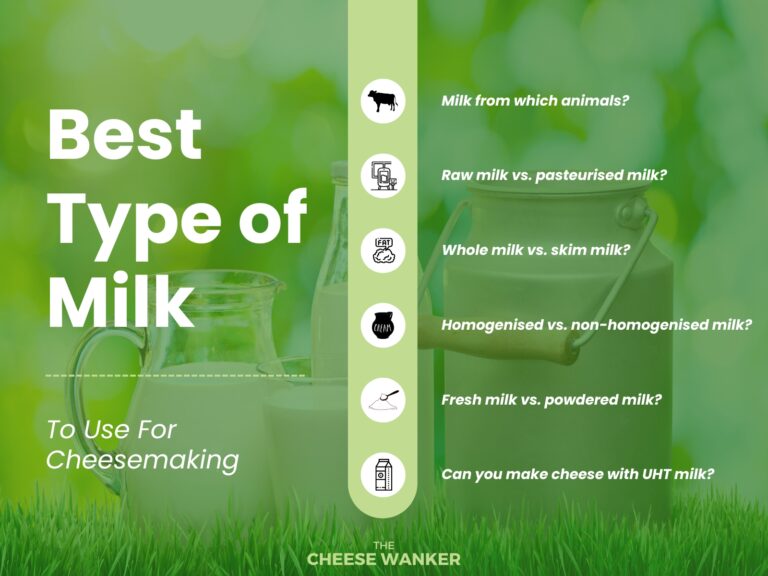
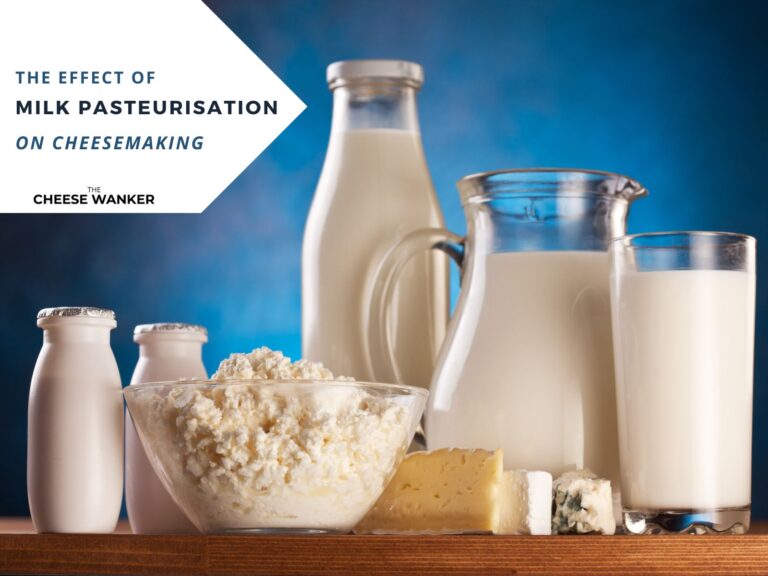
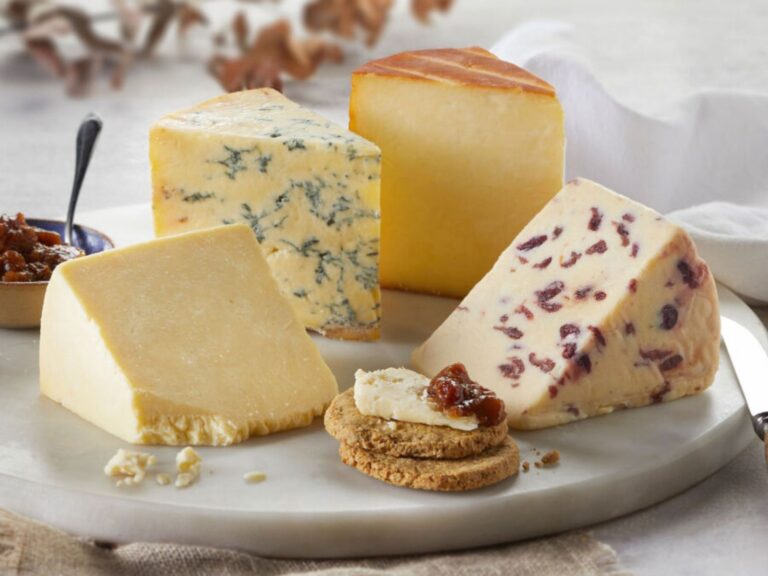
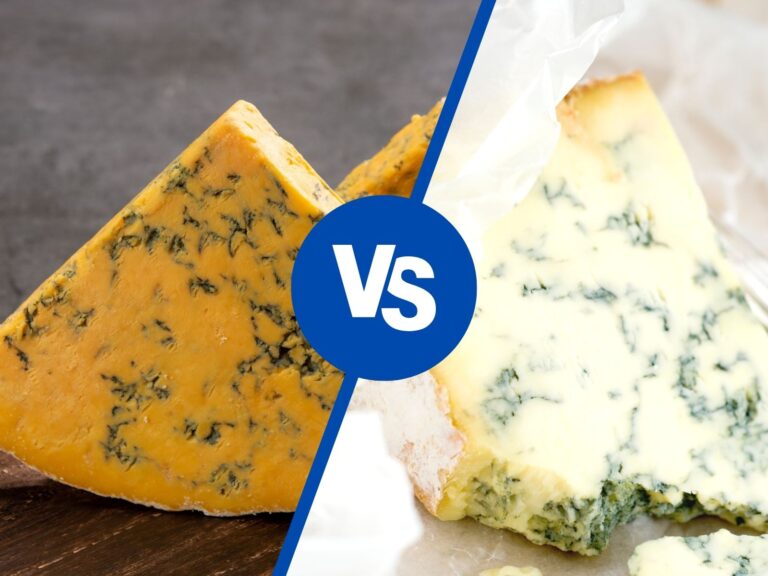
Anyone know where you can buy raw British cheese in Brisbane?
Hi Nick, thank you for leaving a comment on our post. So far, The Standard Market Company in Newstead will be the only confirmed stockist in QLD for those 12 cheeses. Stay tuned for updates.